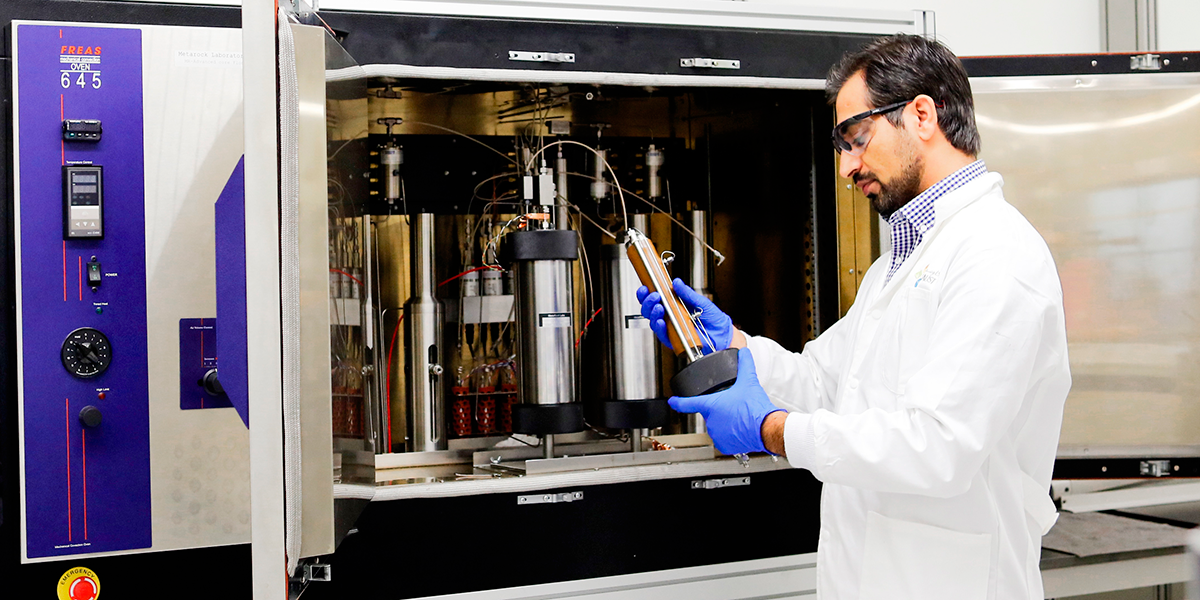.jpg?sfvrsn=39330263_0)
.jpg?sfvrsn=39330263_0)

13 December, 2018
The ANPERC laboratory is always busy, with students and researchers doing everything from scratch tests to electrical engineering. And the facility is still growing. Thanks to KAUST's vision and support new equipment has been installed this semester, including a centrifuge and a custom-built core flood system. ANPERC Post-doc Shehzad Ahmed describes in a nut shell what this latest machine can do:
"The core flood system provides measurements of different rock and fluid properties that help to develop and optimize various enhanced oil recovery processes. In this system, the core samples can be flooded with different fluids such as brine, polymer, surfactants, foams, gasses, and other chemicals under high pressure and high temperature conditions. Different slug injection strategies can be designed to improve oil recovery efficiency. This system is equipped with dual core holders which provide the option to study fluid diversion between different core samples during simultaneous fluid injection."


Dr. Shehzad Ahmed prepares a transfer cylinder.
What makes ANPERC's equipment different from the rest is its innovation and flexibility, according to research scientist Maxim Yutkin. The limitations of laboratory settings have plagued traditional core flood systems. For example, very low pressure gradients are difficult to produce accurately with existing equipment, not to mention slow and frustrating for researchers. But experiments run using high pressure gradients have historically led to massive overestimations of the productivity of wells. So the MetaRock core flood system used by ANPERC has a pressure transducer that remains accurate, having only a 0.001% error rate, even at very low pressures. Another advantage is that the setup is modular, giving the center the flexibility to adjust to an unpredictable future. When Dr. Hussein Hoteit joined ANPERC in 2016, his research into enhanced oil recovery benefitted from having a second transfer cylinder. Thanks to the system's modular design, this only required installing an upgrade, not buying or building a new machine from scratch.